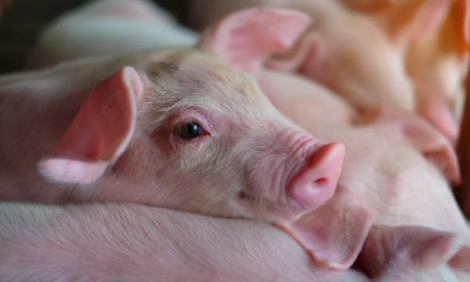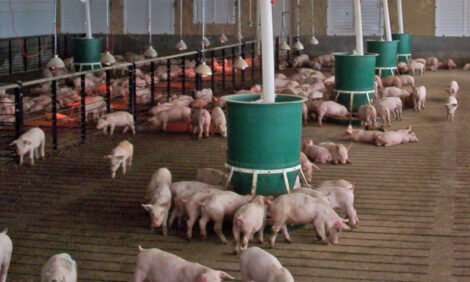



Digestible Energy Content of Hulless Barley
By Ruurd T. Zijlstra, Dave D. Maenz, and John F. Patience, Prairie Swine Center - Hull-less barley is used as a source of energy and amino acids in swine rations in Western Canada but is characterized poorly in terms of DE content. The objective was to determine the DE content of cleaned hull-less barley in relation to barley, wheat, and triticale.
SUMMARY
Chemical characteristics were analyzed to enable subsequent calculation of prediction equations. The DE content of cleaned hull-less barley was equal to that of wheat. We were able to predict the DE content of hull-less barley accurately by using starch, neutral-detergent insoluble nitrogen (NDIN) and neural-detergent fiber (NDF) analyses.
INTRODUCTION
Hull-less barley is an increasingly important energy and amino acid source for grower-finisher pigs in Western Canada; however, the nutritional value of hull-less barley has been characterized poorly. For example, the DE content has been determined in samples that were not cleaned properly or in samples of which hull content in the sample was not reported. For the present study, 5 varieties of hull-less barley were grown on two separate experimental fields in Saskatchewan. The objective was to relate DE content of hull-less barley to other cereal grains and with chemical characteristics to enable subsequent calculation of prediction equations.
EXPERIMENTAL PROCEDURES
The hull-less barley was cleaned and analyzed for crude protein (CP), acid-detergent fiber (ADF), NDF, ash, ether extract (EE), NDIN, starch, and DE content. Regression analysis was used to develop relations between DE content and chemical composition.
RESULTS AND DISCUSSION
The DE content of cleaned hull-less barley was equal to that of wheat (Figure 1). The difference between the DE content of hull-less barley and barley was around 400 kcal/kg on a DM basis, suggesting that for each 25% additional hulls in the sample the DE content of hull-less barley might be reduced by 100 kcal DE/kg DM. Using starch, NDIN, and NDF (all three on DM-basis), an accurate (R2 = 0.88) prediction equation could be developed: DE (kcal/ kg DM) = 2231 + 22 * % starch + 636 * % NDIN – 42 * % NDF. Equations using CP with ADF, NDF, CF, or EE did not results in accurate predictions of DE content.
IMPLICATIONS
Results indicate that the DE content of cleaned hull-less barley is equal to that of wheat. This also means that un-cleaned hull-less barley will have a lesser value than wheat and the amount of hulls remaining in the sample should be taken into consideration on a weight basis for diet formulation or price paid. The DE content of hull-less barley could be predicted accurately; however, the prediction will be expensive to perform.
ACKNOWLEDGEMENTS
Strategic funding provided by Sask Pork, Alberta Pork, Manitoba Pork and Saskatchewan Agriculture and Food Development Fund. The presented work was supported financially by the College of Agriculture First and Best Funds provided by the Saskatchewan Wheat Pool.

Source - Prairie Swine Centre - August 2004








